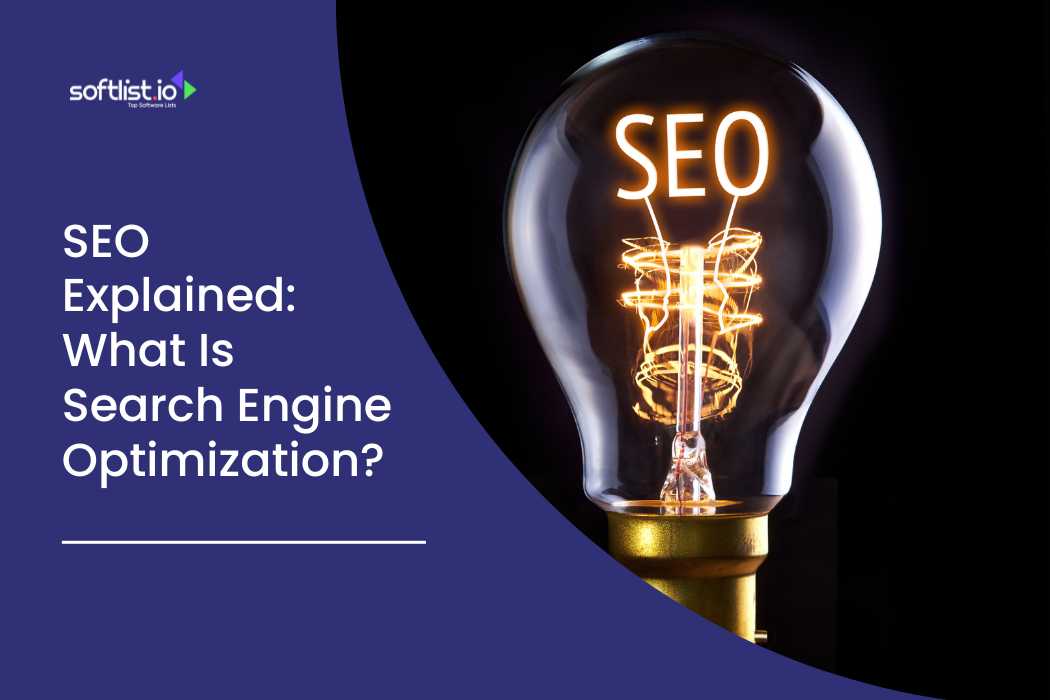Search Engine Optimization, or SEO, is all about making your website rise higher on search engines. When you rank higher, you can be seen more easily and attract more organic business. In this guide, we’ll discuss what SEO is, how it works, and why it’s important for your website.
This article has helpful tips and ideas for people who are just starting out or who want to improve their skills. Are you ready to improve your online presence? Next, we’ll talk about the basic ideas behind SEO and how you can use them correctly. Allow us to begin!
Key Takeaways
- Understanding the Search: Search Engine Optimization is essential for helping people and search engines understand the content of your website, which is a critical part of SEO success.
- Basics of search engine optimization: Effective SEO relies on understanding the basics of search engine optimization, including how search engines work and what factors influence ranking in search.
- Role in SEO: Google’s search algorithm plays a significant role in SEO, as it determines how your content is indexed by search engines and ranks in search results.
- Improving Search Engine Visibility: Consistent SEO efforts are crucial for improving search engine visibility and showing up in search results for relevant terms.
- Search Essentials: Key aspects of Search Engine Optimization include optimizing for web search, image search, and video search to ensure comprehensive coverage across different types of searches.
- Industry Knowledge: Staying updated with the SEO industry and gaining new Search Engine Optimization knowledge is vital for adapting to changes and maintaining successful search strategies.
- Search Indexing: Ensuring that your website is properly indexed by search engines may involve using tools and techniques to tell Google and other search engines about new content.
- SEO Techniques: Successful search engine optimization involves a combination of techniques, including on-page, technical, and off-page SEO, to address various aspects of Search Engine Optimization.
What is Search Engine Optimization?

Source: Canva Pro
Search Engine Optimization (SEO) is the practice of optimizing your website to improve its visibility in search engine results. When people search for terms related to your business, SEO helps your site appear higher in the search results, increasing the chances that they will visit your site.
SEO involves various techniques and strategies that aim to help search engines understand your content and index your site effectively.
Definition and Importance
SEO (search engine optimization) is crucial for any website that wants to attract organic search traffic. By optimizing your site for search engines, you ensure that your content is easily discoverable by search crawlers, which helps in ranking higher on the search engine results page (SERP).
- Increases Visibility: Higher rankings on SERPs mean more visibility and more traffic to your site.
- Builds Credibility: Websites that rank higher in search results are often perceived as more credible by users.
- Cost-Effective: Unlike paid search, Search Engine Optimization targets organic search results, which can bring in traffic without direct costs per click.
History of SEO
Search Engine Optimization has evolved significantly since its inception. In the early days of the internet, SEO techniques were relatively straightforward and included simple keyword stuffing and link building.
However, as search engines like Google became more sophisticated, the strategies and techniques required for effective SEO became more complex.
- Early SEO: Focused on keyword density and link building without much regard for content quality.
- Modern SEO: Emphasizes high-quality content, the user experience, and adherence to search engine guidelines.
How to Do SEO for Beginners?
Source: Canva Pro
For those new to Search Engine Optimization, starting with the basics is essential. This involves understanding the key components of SEO and how to implement them effectively. SEO work for beginners includes keyword research, on-page optimization, and using various SEO tools to track progress and identify areas for improvement.
Basic SEO Techniques
Keyword Research: Understanding what keywords your target audience is searching for is the foundation of good SEO.
- Identify Keywords: Use tools like Google Keyword Planner or SEMrush to find relevant search terms.
- Target Long-Tail Keywords: These are more specific and often less competitive, making it easier to rank higher.
- On-Page Optimization: Ensuring that your website’s pages are optimized for the keywords you want to rank for.
- Title Tags and Meta Descriptions: These should include your target keywords and be compelling to encourage clicks.
- Content Optimization: Use keywords naturally within your content. Focus on creating high-quality, informative content that answers the questions your audience is asking.
- Header Tags: Use H1, H2, and H3 tags to structure your content and make it easier for search engines to understand.
Manage SEO, content marketing, competitor research, PPC, and social media marketing all from a single platform for streamlined efficiency and effective results.
Beginner Tools for SEO
Free Tools: Several free tools can help beginners get started with SEO.
- Google Search Console: Helps monitor your site’s performance and provides data on search queries, clicks, and indexing issues.
- Google Analytics: Provides insights into how visitors interact with your site, which pages are most popular, and where your traffic is coming from.
- Tutorials and Resources: There are numerous online resources where you can learn SEO.
- Google’s SEO Starter Guide: An official resource provided by Google, offering comprehensive guidelines on the basics of SEO.
- SEO Blogs: Websites like Search Engine Land and the Google Search Central Blog provide valuable insights and updates on SEO best practices.
How Does the SEO Work?

Source: Canva Pro
Understanding how SEO works involves knowing how search engines like Google operate. Search engines use complex algorithms to crawl, index, and rank websites. Knowing how these processes work can help you optimize your site more effectively.
Search Engine Algorithms
Google Algorithm: Google uses a sophisticated algorithm to determine the relevance and ranking of web pages in response to search queries.
- Crawling: Search engines use bots, also known as spiders or crawlers, to discover new and updated content on the web. These crawlers follow links from one page to another and collect data about each page they visit.
- Indexing: Once a page is crawled, it is indexed by the search engine. This means it is stored in the search engine’s database and can be retrieved when relevant search queries are made.
Other Search Engines: While Google is the most widely used search engine, others like Bing and Yahoo have their own algorithms and ranking factors.
- Similar Processes: Most search engines follow similar processes for crawling and indexing web pages, although the specific algorithms and ranking factors may vary.
Crawling and Indexing
Crawling: This is the process by which search engine bots scan the web to find new content. Ensuring your site is easily crawlable is crucial for Search Engine Optimization.
- Sitemaps: Use XML sitemaps to help search engines understand the structure of your site and discover new pages.
- Robots.txt: This file tells search engines which pages to crawl and which to ignore.
Indexing: After crawling, the content is indexed. Indexed pages are stored in the search engine’s database and can appear in search results.
- Content Quality: High-quality, relevant content is more likely to be indexed and ranked highly.
- URL Structure: Clear, descriptive URLs help search engines understand the content of your pages.
Search Engine Optimization involves continuous learning and adaptation as search engines update their algorithms. By staying informed about SEO changes and applying best practices, you can improve your site’s search engine ranking and drive more organic traffic. Using tools like Google Search Console and regularly conducting SEO audits can help identify issues and opportunities for optimization.
What is an Example of SEO?

Source: Canva Pro
Examples of SEO in practice help illustrate how effective search engine optimization can transform a website’s visibility and ranking. SEO strategies vary widely depending on the type of website, its goals, and the competitive landscape. Here, we’ll look at a case study and practical implementation to understand how SEO works in real-world scenarios.
Case Study: Successful SEO Strategy
A practical example of Search Engine Optimization involves a small e-commerce business that sells handmade jewelry. By implementing a comprehensive SEO strategy, the business significantly improved its online presence and search rankings.
- Keyword Research: The business started with in-depth keyword research to identify relevant search terms that potential customers were using. They targeted both broad keywords (e.g., “handmade jewelry”) and long-tail keywords (e.g., “handmade silver earrings for women”).
- On-Page Optimization: They optimized their product pages with relevant keywords in the titles, meta descriptions, and content. High-quality images and detailed descriptions helped improve user engagement and search engine rankings.
- Technical SEO: The website’s SEO included improving site speed, mobile optimization, and creating an XML sitemap to help Google and other search engines crawl and index the pages efficiently.
- Content Creation: They launched a blog focused on jewelry trends, care tips, and behind-the-scenes stories of their craftsmanship, which helped attract organic traffic and improve their site’s SEO.
- Link Building: They engaged in a link-building campaign, earning backlinks from reputable fashion blogs and local business directories.
As a result, their organic traffic increased by 150%, and they saw a significant boost in sales from search engine queries.
Practical Implementation
For those new to Search Engine Optimization, here’s a step-by-step guide to implementing a successful SEO strategy:
- Conduct a Site Audit: Use tools like Google Search Console and SEMrush to identify technical issues that could hinder your site’s SEO performance.
- Optimize for Mobile: Ensure your website is mobile-friendly, as Google uses mobile-first indexing.
- Improve Site Speed: Compress images, leverage browser caching, and minimize JavaScript to improve page load times.
- Create Quality Content: Develop high-quality, informative content that addresses the needs and questions of your target audience.
- Build Backlinks: Engage in ethical link-building practices to earn backlinks from authoritative sites in your industry.
By following these steps, you can improve your site’s Search Engine Optimization and achieve better search rankings.
What is the Benefit of Search Engine Optimization?
SEO offers numerous benefits that can significantly impact a website’s success. From increasing organic traffic to building brand credibility, SEO is a critical component of any digital marketing strategy.
Increased Traffic
One of the primary benefits of Search Engine Optimization is the increase in organic search traffic. When your site ranks higher on the search results page for relevant keywords, more people are likely to visit your site.
- Organic Traffic: Unlike paid search, organic traffic is free. Once your site is well-optimized, you can continue to attract visitors without incurring additional costs.
- Targeted Visitors: SEO helps attract visitors who are actively searching for the products or services you offer, leading to higher conversion rates.
Brand Visibility and Credibility
Ranking highly in search results enhances your brand’s visibility and credibility. Users tend to trust sites that appear at the top of search results more than those that don’t.
- Visibility: Increased visibility in search results makes your brand more recognizable to potential customers.
- Credibility: High rankings signal to users that your site is reputable and trustworthy.
Cost-Effectiveness
Compared to other digital marketing strategies, like search engine marketing (SEM), SEO is highly cost-effective. While SEO requires time and effort, the long-term benefits far outweigh the costs.
- Lower Costs: SEO focuses on organic traffic, which doesn’t incur the cost per click that SEM does.
- Long-Term Results: Effective SEO can provide long-lasting results, reducing the need for ongoing advertising expenses.
Final Thoughts
SEO is a multifaceted discipline crucial for enhancing your website’s visibility and search engine rankings. By following a comprehensive guide to SEO, you can better understand how search engines work and what it takes to rank higher in search results.
From on-page to technical and off-page strategies, SEO encompasses various techniques that collectively improve search quality and performance.
Learning how SEO works, using official Google tools like Google Webmaster, and keeping up with industry trends is essential for ongoing SEO success. Remember, SEO takes time, and consistent effort is needed to see significant results.
Staying updated on SEO essentials and optimization techniques will help you maintain a strong presence in major search engines and achieve your digital marketing goals.
Boost your SEO performance. Check out Softlist’s ‘Digital Marketing‘ category for innovative tools that optimize your online presence and increase visibility.
Save big today! Explore Softlist’s ‘Deals and Offers‘ page for unbeatable prices on your favorite items and discover the perfect product by reading our Top Reviews!
FAQs
What are the Different Types of SEO?
The main types of SEO include on-page SEO, off-page SEO, and technical SEO. Each type focuses on different aspects of optimizing a website to improve its search engine rankings.
How do Search Engines Work?
Search engines discover, crawl, and index content from across the web. They use complex algorithms to rank pages based on relevance and quality for a given search.
How Often Should I Update My SEO Tactics?
SEO tactics should be reviewed and updated regularly to keep up with algorithm changes and industry trends, ensuring your site remains optimized and competitive.
Why is SEO Important for My Website?
SEO is essential because it helps improve your site’s visibility in search results, driving more organic traffic and increasing the potential for higher conversion rates.
Can international SEO help my website?
Yes, international SEO optimizes your site for different languages and regions, helping you reach a global audience and improve rankings in international search engines.









